Family‑Friendly Landscaping: Backyard Ideas Kids Will Love
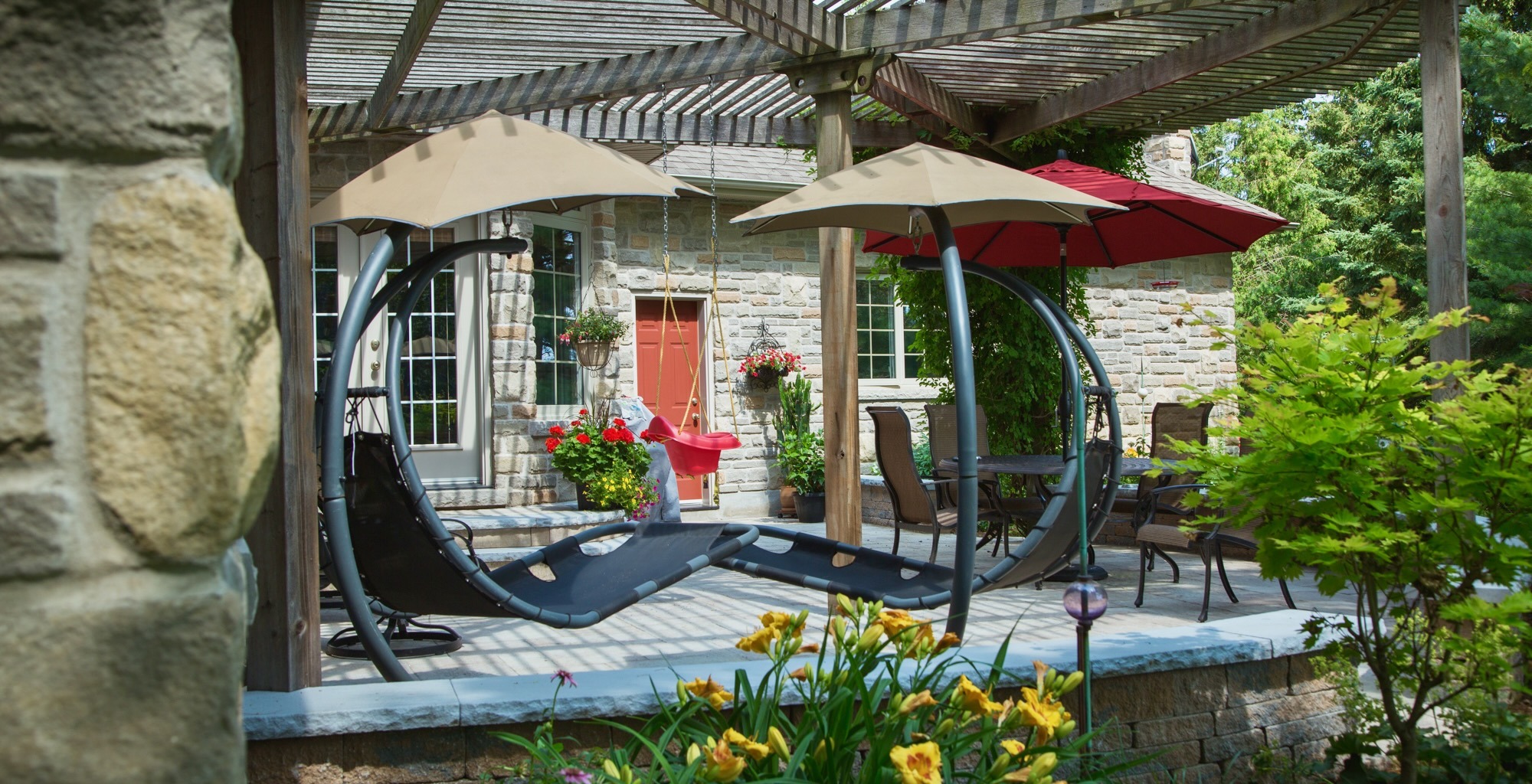
You want a beautiful outdoor space that feels like an escape—not a fenced-off area your kids can’t touch. But creating something that’s both elegant and family-ready can be tricky. A lush lawn can quickly turn to mud, and delicate garden beds don’t always survive energetic play. The challenge is finding the balance between a space that impresses you and one that invites your children to enjoy it safely.
That’s where thoughtful design comes in. With the right surfaces, layout, and materials, you can build a backyard that’s as durable as it is stunning—a place where your kids can explore freely and your investment stays strong. These kid-friendly backyard ideas prove you don’t have to choose between sophistication and play.
If you’re planning a complete outdoor transformation, explore our Ultimate Landscaping Guide for Kitchener-Waterloo for deeper inspiration and expert advice.
Creating Safe Play Surfaces
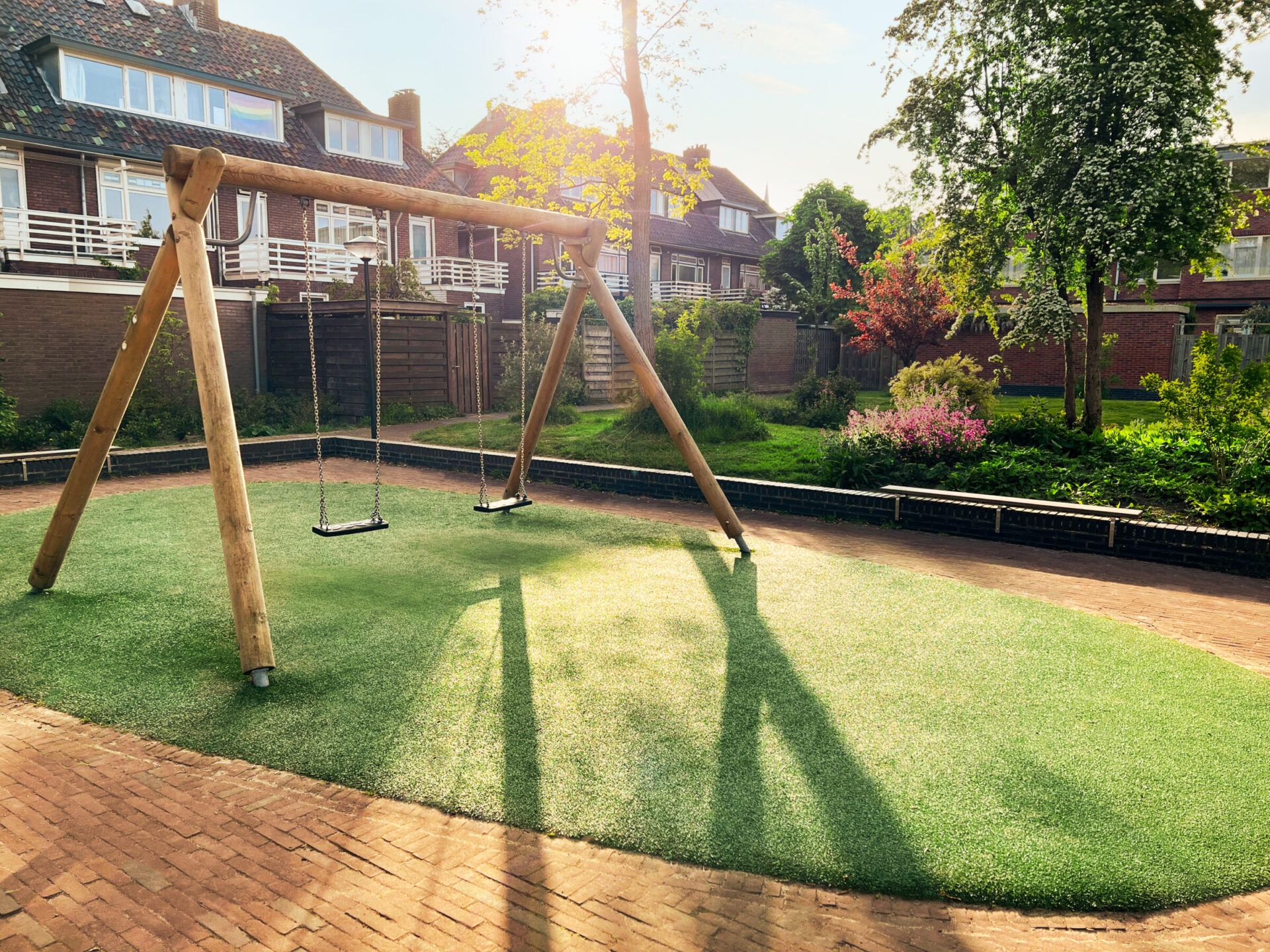
Choosing the Right Surfacing Materials
One of the most important kid-friendly backyard ideas is ensuring that children have soft landings when they fall. Government guidelines recommend cushioning play areas with loose‑fill materials like wood mulch, wood chips, sand, pea gravel or shredded recycled rubber. Synthetic lawns or astroturf can also be used when installed over a cushioned base. These materials absorb impacts better than hard surfaces and help prevent serious injuries. Concrete and stone provide little cushioning and should be avoided.
Loose‑fill surfaces compress over time, so plan for extra depth when you install them. For example, if your play area needs 9 inches of wood chips, you should initially install about 12 inches. This extra material compensates for compression due to weather and use. Maintaining the right depth is essential—guidelines recommend never using less than 9 inches of loose‑fill material except for shredded rubber, which can be 6 inches deep. Check surfaces regularly and add more material where kids frequently land, such as under swings and slide exits.
Play surfacing isn’t only about cushioning falls. Good drainage prevents standing water, which can cause materials to compact and break down. If your yard sits on a hard surface like concrete, you should build layers: a 3‑ to 6‑inch base layer of drainage material (like gravel), a geotextile fabric to separate layers and then the loose‑fill surfacing. In high‑traffic areas, install impact‑attenuating mats to reduce displacement of the surface. Taking these steps ensures your surfacing stays safe and long‑lasting.
Creating Zones for Active and Quiet Play
One of the classic kid-friendly backyard ideas is to divide the yard into zones. Active play areas can include swings, slides, climbing structures or trampolines. Quiet zones are ideal for sandboxes, reading nooks or small gardens. Keeping active play equipment separate from quieter activities reduces collisions and gives children options to explore at their own pace. Follow guidelines that recommend leaving sufficient space between play structures to create buffer zones in case a child falls.
When laying out zones, consider age‑appropriate play heights. For example, children under two should not climb higher than 32 inches (about 81 centimetres), and kids aged two to five should not climb above 60 inches (about 152 centimetres). Proper spacing and height limits provide the safety parents expect while giving children appropriate challenges.
Maintaining Surfaces Throughout the Year
Routine maintenance helps keep your play surfaces safe. Monitor your kid‑friendly backyard for signs of compaction or displacement. Add more mulch or sand where foot traffic is heavy and rake surfaces to eliminate uneven spots. Check for drainage problems after heavy rain and clear debris that could hide hazards. In winter, be mindful that frozen surfaces can reduce impact absorption. Regular maintenance ensures the play area stays soft and safe year‑round.
Choosing Secure Fencing & Boundaries
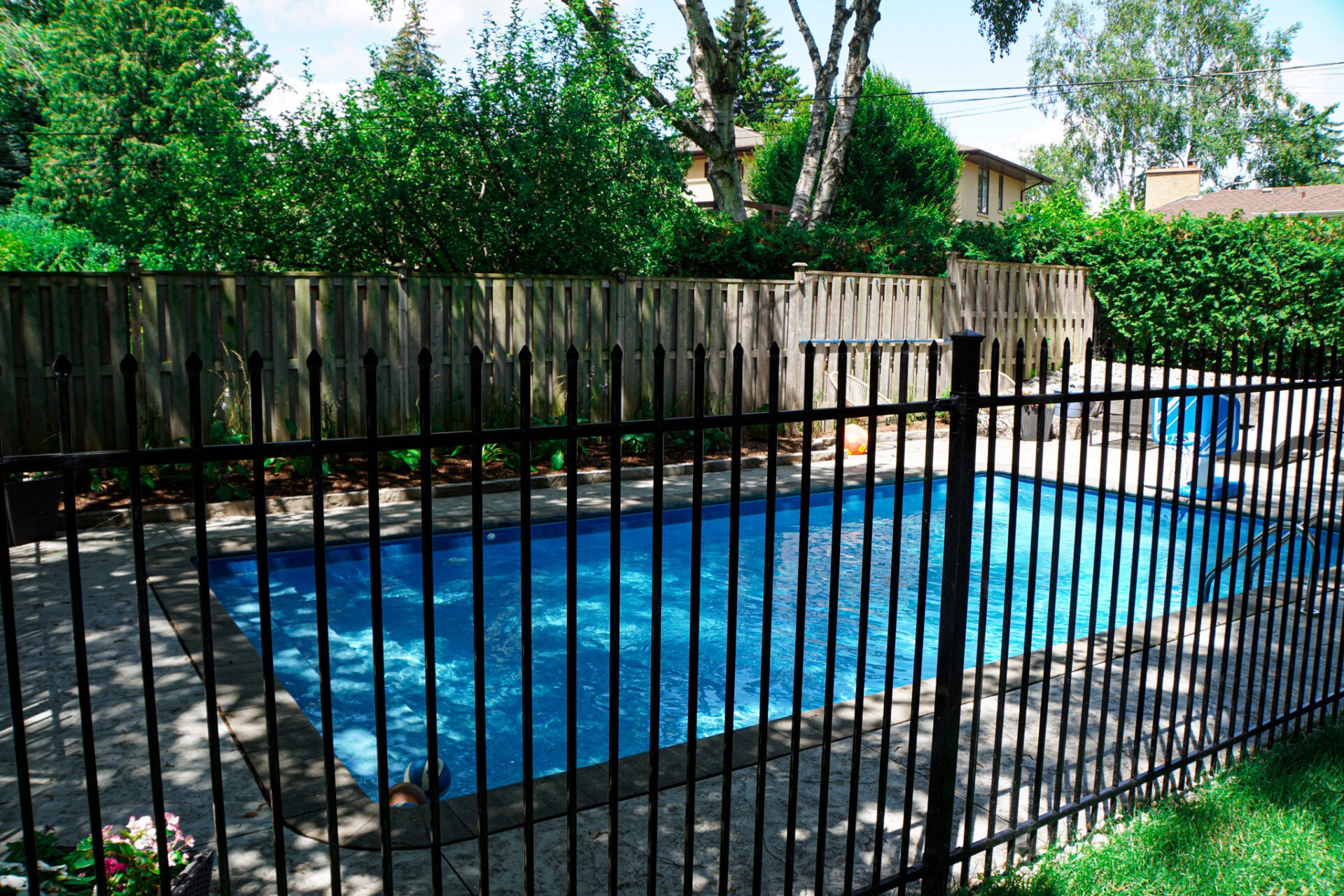
The Role of Fencing in Child Safety
A secure fence is essential for a kid-friendly backyard. It defines play areas and prevents children from wandering near roads or pools. Most municipalities require pool fences at least 4 feet (1.2 m) high and self-closing. Choose vertical slats or mesh designs that kids can’t climb, and keep gaps smaller than 3.5 inches (9 cm) to avoid head entrapment.
Gates, Locks and Pool Barriers
Install gates with childproof latches and keep them closed except when entering or leaving the play area. Pool fences should have self‑locking gates to reduce the risk of accidental drownings. If your yard includes a hot tub or pond, cover it securely and use alarms or barriers to prevent unsupervised access. Check local bylaws in your province for specific requirements; they often stipulate fence heights and gate hardware.
Natural Boundaries and Hedges
Your kid-friendly backyard ideas may include natural boundaries such as hedges or shrubbery. These soften the look of a fence and provide wildlife habitat. When selecting plants for hedges, avoid species with thorns or toxic berries. Create a dense planting to discourage children from squeezing through gaps. Natural boundaries provide an attractive backdrop while keeping the play area contained.
Selecting Non‑Toxic Plants & Sensory Gardens
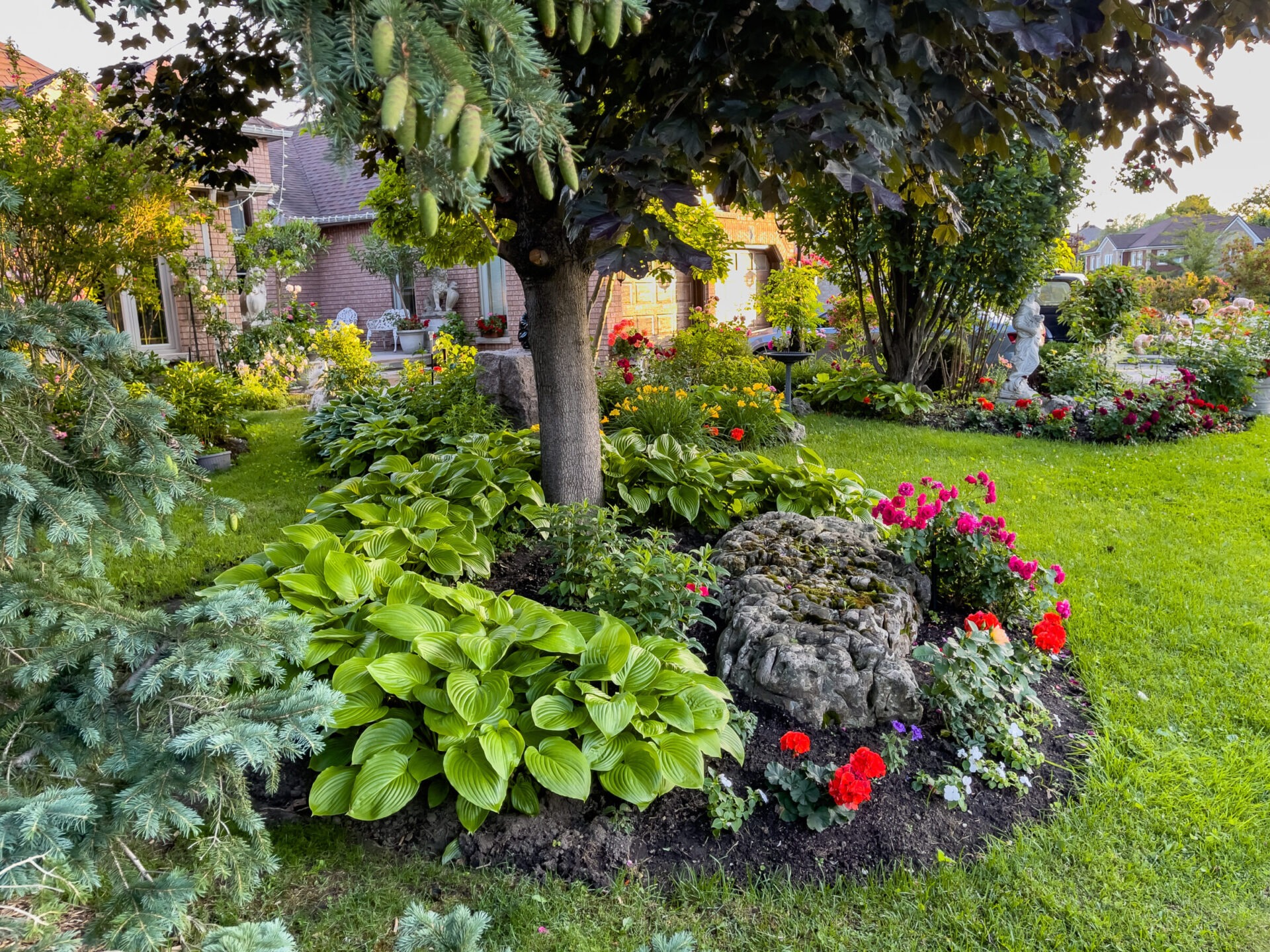
Choosing Plants With Safety in Mind
Children love to explore plants, so it’s important to select species that are non‑toxic. Michigan State University Extension advises parents to choose safe, non‑toxic plants and offers resources from the National Capital Poison Center to identify poisonous and non‑poisonous species. When you purchase plants, take a list of safe species with you. Also record the common and botanical names of plants in your yard so that you can provide information to a poison centre if needed. Keep bulbs and seeds out of reach and teach children not to put plants, berries, soil or seeds in their mouth.
Creating a Sensory Garden for Kids
A sensory garden helps children connect with nature through sight, smell, touch, taste, and sound. Give kids a small, manageable space with quick-growing, colourful plants like sunflowers, nasturtiums, and cherry tomatoes. Add fragrant herbs such as basil and dill, and include textured plants like lamb’s ear or ornamental grasses for hands-on fun. Use raised beds or containers to protect delicate plants and line paths with smooth stones or mulch for easy access.
Organic Practices and Garden Safety
When gardening with children, use organic methods whenever possible and store fertilizers and chemicals out of reach. The Penn State Extension recommends avoiding garden activities during the hottest part of the day and ensuring children wear hats and sunscreen. Never leave buckets of water unattended around young children, and remind kids not to eat any plant unless an adult has identified it. Provide child‑size tools and gloves to make gardening comfortable. These practices keep gardening fun and safe.
Designing Engaging Play Zones & Learning Spaces
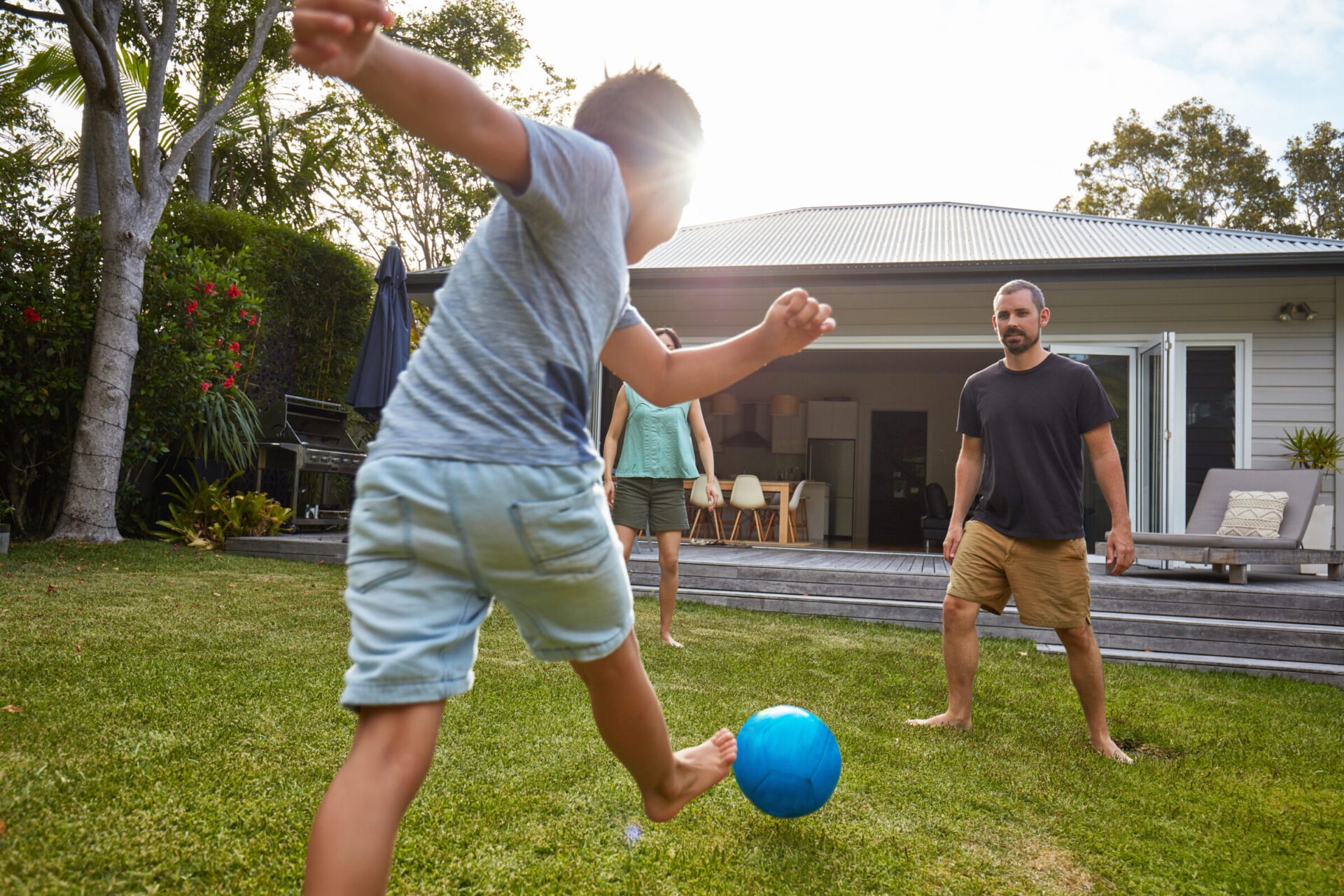
Age‑Appropriate Play Equipment
When choosing play equipment, match it to your children’s ages and abilities. Younger kids need low platforms, gentle slides, and secure swings, while older ones can enjoy climbing walls or zip lines that meet safety standards. Keep all equipment in good condition—check for rust, splinters, or sharp edges—and remove ropes or leashes that could pose strangulation risks. Always follow manufacturer guidelines for safe installation and use.
Incorporating Learning Elements
A yard can double as a classroom. Consider adding a chalkboard wall, a weather station or a small wildlife observation area. A rain gauge and ruler teach kids to measure rainfall and plant growth. A small compost bin introduces children to recycling organic waste. Incorporating chalkboards or weather stations into your kid-friendly backyard ideas adds educational value. These features support STEM learning and cultivate respect for nature.
Encouraging Outdoor Play Year‑Round
Canadian climates vary widely, so your kid-friendly backyard ideas should account for weather. Provide shade with pergolas, umbrellas or mature trees for hot summers. In winter, designate areas for snow play and build a safe sledding hill if space permits. Ensure that surfaces remain resilient even when frozen by topping up mulch or rubber as needed. Dress children appropriately for the season and encourage them to enjoy fresh air all year.
Building Comfortable & Functional Family Areas
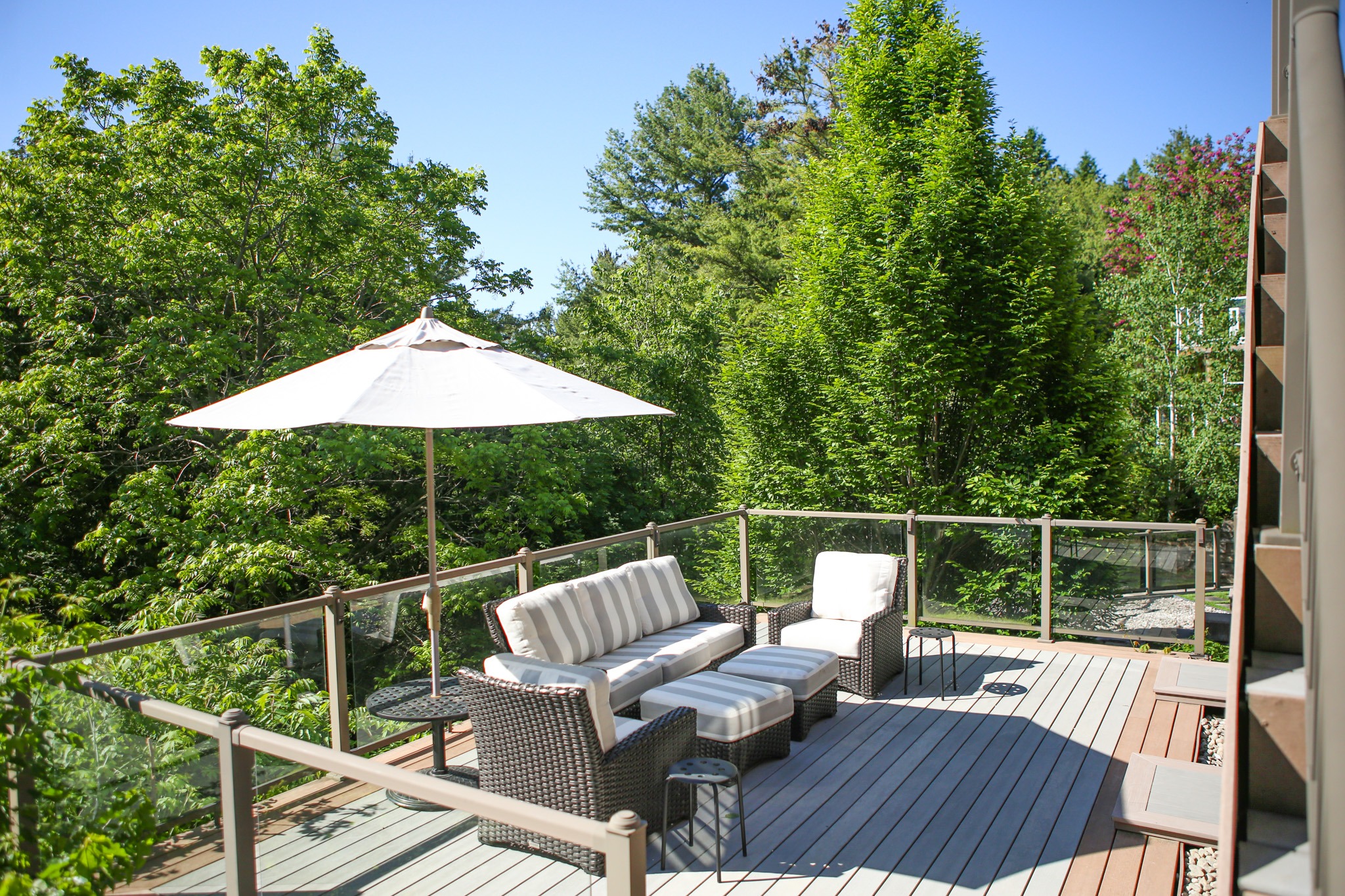
Seating and Gathering Spaces
A successful kid‑friendly backyard welcomes adults too. Create seating areas where you can relax while supervising play. Use weather‑resistant materials like composite decking or stone pavers for patios. Add comfortable chairs, benches or hammocks to make the space inviting. Position seating near play zones so you can watch children without hovering.
Shade is essential in a family yard. Use pergolas, shade sails or large umbrellas to create cool spots. Plant deciduous trees that offer shade in summer and let sunlight through in winter. Add outdoor lighting such as string lights or solar path lights to make the yard usable in the evening.
Dining and Outdoor Kitchens
An outdoor dining area encourages family meals outside. Include a table and chairs, and, if budget allows, a built‑in grill or small outdoor kitchen. Keep cooking appliances away from play areas to avoid burns or accidents. Use non‑slip surfaces under dining furniture, and ensure there’s enough space for children to move around safely.
Multi‑Use Lawn Areas
Leave part of your yard as open lawn or artificial turf for running games. Artificial turf provides a level, mud‑free surface and often has shock‑absorbing padding underneath. If you choose natural grass, opt for hardy varieties that can withstand foot traffic. Keep this area free of obstacles to allow activities like ball games and yoga.
Maintaining Your Kid‑Friendly Backyard
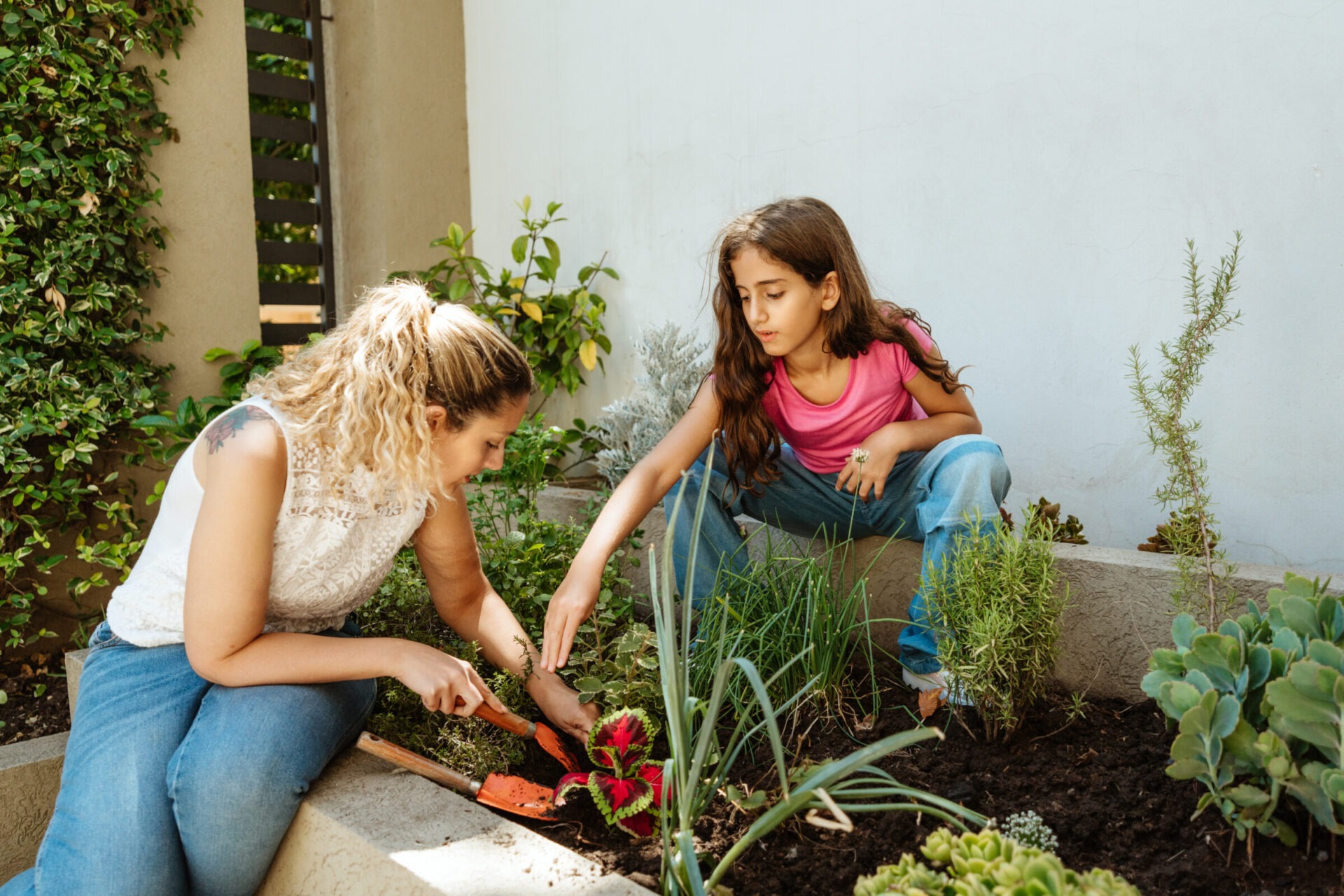
Regular Safety Checks
A safe backyard requires ongoing care. Make a habit of inspecting play equipment for wear and tear. Tighten loose bolts, sand rough wood and replace damaged parts. Check that fencing remains secure and gates latch properly. Trim hedges and trees to prevent branches from becoming hazards. Remove any trip hazards like roots or rocks.
Seasonal Gardening Tasks
Your garden will need attention throughout the year. In spring, replenish mulch and compost. In summer, water plants deeply and adjust play areas for shade. During autumn, clear leaves and fallen fruit so they don’t create slippery surfaces. In winter, store movable equipment to prevent damage and check that snow does not overload play structures. Keeping up with these tasks preserves the beauty and safety of your kid-friendly backyard ideas.
Teaching Children to Stay Safe
Kids learn safety by example. Explain why certain rules exist, such as staying inside the fence or not climbing too high. The MSU Extension reminds parents to act as the first teacher and to educate children not to put plants or other garden materials in their mouth. The Penn State Extension also stresses close supervision and reminders not to eat unidentified plants. Make sure your children understand which areas are off‑limits and encourage them to communicate if something feels unsafe.
Bringing It All Together
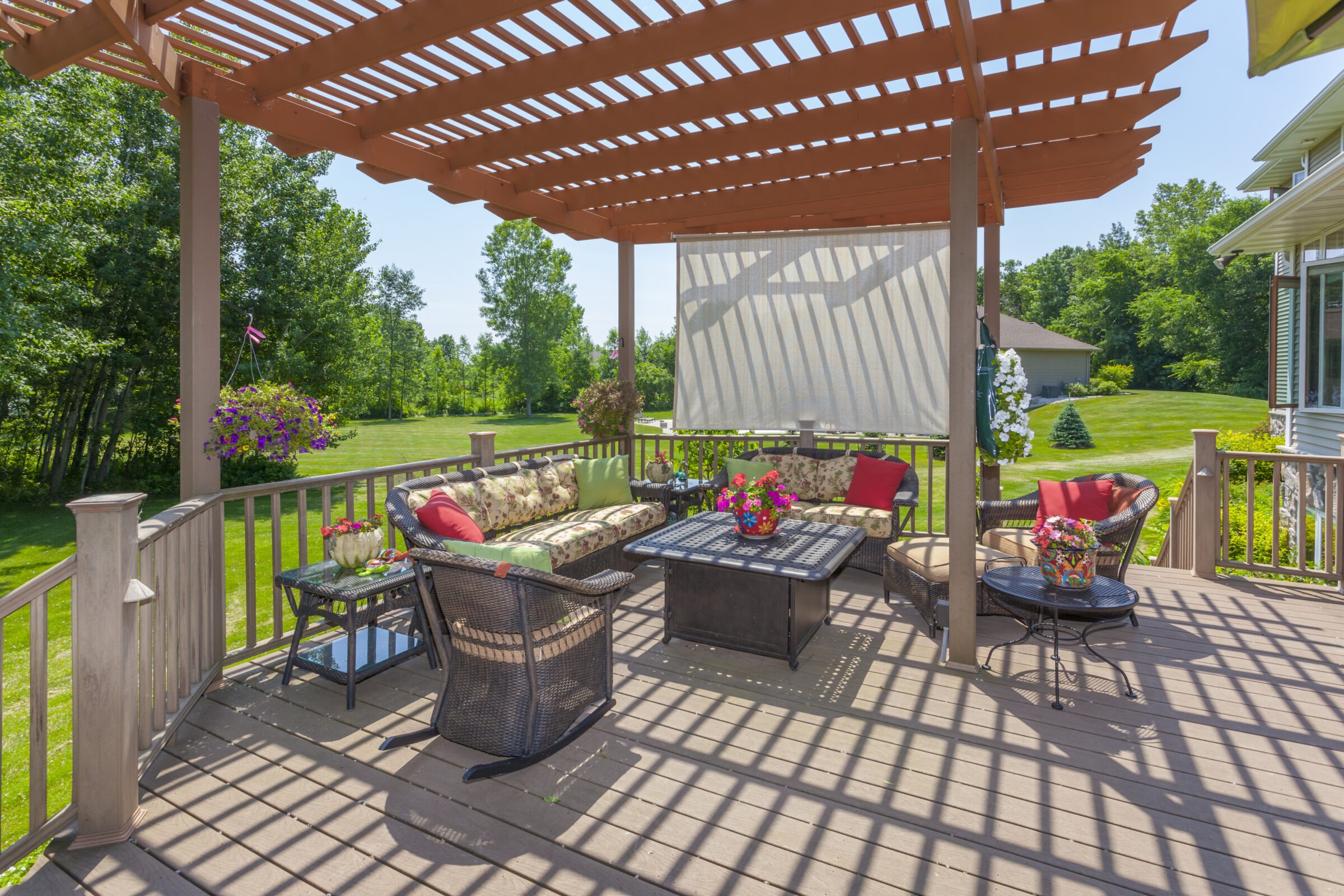
Designing a yard that delights children and reassures parents does not require expensive equipment—it needs thoughtful planning and consistent care. By using soft surfacing materials, secure fencing, non‑toxic plants and age‑appropriate play zones, your backyard becomes a safe place for exploration and growth. Adding comfortable seating and dining spaces ensures the whole family enjoys the outdoors. Maintain your yard regularly and involve children in caring for it, and you will build lasting memories in a space designed for fun and safety.
Ready to turn these kid-friendly backyard ideas into reality? Request a Quote from professionals who understand family‑friendly landscaping and can help you create a yard your children will love.
Summary
This blog explored kid-friendly backyard ideas that prioritise safety and fun. You learned about choosing soft surfacing materials like wood chips or mulch and installing them at sufficient depth. Secure fencing with childproof gates prevents wandering and reduces pool hazards. Selecting non‑toxic plants and creating sensory gardens enriches your yard while protecting children. Age‑appropriate play equipment, comfortable seating areas and proper maintenance ensure your garden is enjoyable for everyone. Use these practical tips to design a backyard that supports healthy play and family time.
Tags:

